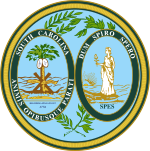
James Terry Sanford was an American lawyer and politician from North Carolina. A member of the Democratic Party, Sanford served as the 65th Governor of North Carolina from 1961 to 1965, was a two-time U.S. presidential candidate in the 1970s, and served as a U.S. senator from 1986 to 1993. He was a strong proponent of public education and introduced several reforms and new programs in North Carolina's schools and institutions of higher education as the state's governor. From 1970 to 1985, Sanford served as the president of Duke University.

Marshall Clement "Mark" Sanford Jr. is an American politician and author who served as the U.S. representative for South Carolina's 1st congressional district from 1995 to 2001 and from 2013 to 2019, and as the 115th governor of South Carolina from 2003 to 2011. He is a member of the Republican Party.
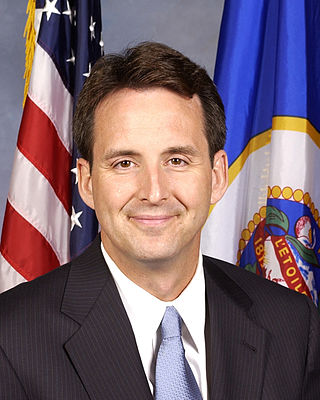
The 2006 Minnesota gubernatorial election took place on November 7, 2006. Incumbent Tim Pawlenty was endorsed by the state Republican convention on June 2, 2006, while the state Democratic–Farmer–Labor convention endorsed Mike Hatch on June 10, 2006. The party primaries took place on September 12, 2006, with Hatch defeating DFL challengers Becky Lourey and Ole Savior and incumbent Pawlenty defeating Sue Jeffers. In the November 7 general election, Pawlenty received a plurality of the votes, defeating Hatch by a margin of 1%. As a result, this election was the closest race of the 2006 gubernatorial election cycle.

The 2006 Oregon gubernatorial election took place on November 7, 2006. Incumbent Democratic Governor of Oregon Ted Kulongoski ran for a second and final term as governor. Kulongoski faced several challengers in his primary, whom he dispatched to win his party's nomination a second time, while Republican nominee Ron Saxton, the former Chair of the Portland Public Schools Board and a candidate for governor in 2002 emerged from a crowded primary. Kulongoski and Saxton were initially going to be challenged in the general election by State Senator Ben Westlund, but Westlund withdrew his candidacy before the general election. There were multiple independent and third party challengers on the ballot as well. In a hard-fought campaign, Kulongoski won re-election by a surprisingly wide margin, winning his second term as governor.

The 2006 South Carolina State Elections took place on November 7, 2006, and included the gubernatorial election. All nine popularly elected constitutional officers were up for reelection, and all races except the Attorney General's were contested. The entire South Carolina House of Representatives, one state senator and six state circuit solicitors were also up for election. Several constitutional amendments were also on the ballot.

South Carolina's 3rd congressional district is a congressional district in western South Carolina bordering both Georgia and North Carolina. It includes all of Abbeville, Anderson, Edgefield, Greenwood, Laurens, McCormick, Oconee, Pickens, and Saluda counties and portions of Greenville and Newberry counties. The district is mostly rural, but much of the economy revolves around the manufacturing centers of Anderson and Greenwood. With a Cook Partisan Voting Index rating of R+21, it is the most Republican district in South Carolina.

The 1990 South Carolina gubernatorial election was held on November 6, 1990 to select the governor of the state of South Carolina. Governor Carroll A. Campbell Jr., the popular Republican incumbent, handily defeated Democrat Theo Mitchell to become only the second governor at the time elected to a second consecutive four-year term.

The 2002 South Carolina gubernatorial election was held on November 5, 2002 to select the governor of the state of South Carolina. Mark Sanford, the Republican nominee, defeated incumbent Democratic Governor Jim Hodges to become the 115th governor of South Carolina. Hodges became only the third incumbent governor and the first Democratic governor in South Carolina history to lose reelection.

The 2010 South Carolina gubernatorial election took place on November 2, 2010. Incumbent Republican Governor Mark Sanford was term limited and unable to seek re-election. Primary elections took place on June 8, 2010, and a runoff election, as was necessary on the Republican side, was held two weeks later on June 22.
John M. "Jake" Knotts, Jr. is a former Republican member of the South Carolina Senate, representing the 23rd District from 2002 to 2012. Previously he was a member of the South Carolina House of Representatives from 1994 through 2002.
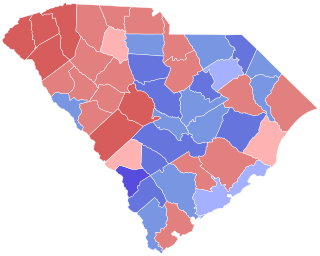
The 2004 United States Senate election in South Carolina was held on November 2, 2004. Longtime incumbent Democratic U.S. Senator Fritz Hollings retired, and Republican U.S. Representative Jim DeMint won the open seat. DeMint was the first Republican to hold this Senate seat since 1879, and the first Republican to ever be popularly elected to the seat.

The 2008 South Carolina Senate election were held on Tuesday, November 4, 2008. The primary elections were held on June 10 and the runoff elections were held two weeks later on June 24. The current composition of the state delegation is 27 Republicans and 19 Democrats. Senators are elected for four-year terms, all in the same year.

The 1970 Maine gubernatorial election took place on November 3, 1970. Incumbent Democratic Governor of Maine Kenneth M. Curtis chose to seek re-election. Curtis won a landslide victory in the Democratic primary. His general election opponent was Maine Attorney General James Erwin, the Republican nominee. Erwin had also easily won his respective party primary and received the Republican nomination for governor. Curtis narrowly defeated challenger in one of the tightest elections in Maine history – the final margin of victory was a mere 890 votes. Curtis received 163,138 votes (50.14%), while Erwin had 162,248 votes (49.86%).
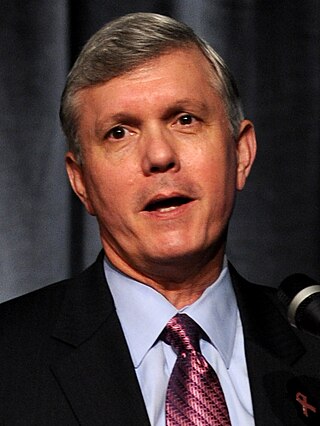
The 2012 North Carolina gubernatorial election took place on November 6, 2012, concurrently with the 2012 United States presidential election, U.S. House election, statewide judicial election, Council of State election and various local elections.

The 2011 Kentucky gubernatorial election was held on November 8, 2011, to elect the governor of Kentucky and the lieutenant governor of Kentucky. Incumbent Democrat Steve Beshear won re-election, defeating Republican challenger David L. Williams, then the president of the state senate, and Gatewood Galbraith, an independent candidate. Statewide turnout in this election was 28%.
Thomas L. Moore is a South Carolina businessman and former state politician who is now an executive of a payday lending association in Washington, D.C. Moore was the Democratic nominee for Governor of South Carolina in 2006, but lost to incumbent Republican Governor Mark Sanford.
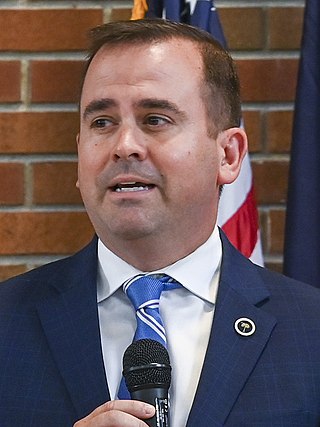
Neal Collins is a Republican member of the South Carolina House of Representatives, representing the 5th district. He was first elected in 2014, and re-elected in every subsequent election. In 2010, he was one of several candidates running for the open seat of 3rd congressional district of South Carolina in the House of Representatives, which was held by J. Gresham Barrett, but left to compete in the 2010 Gubernatorial election for the Governor of South Carolina.
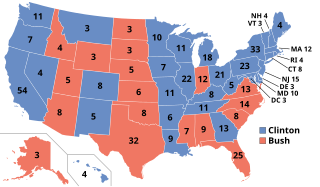
The 1992 United States elections elected state governors, the President of the United States, and members of the 103rd United States Congress. The election took place after the Soviet Union crumbled and the Cold War ended, as well as the redistricting that resulted from the 1990 census. Often considered "The Year Of The Woman," these elections brought an increased number of female politicians to Washington such as Dianne Feinstein (D-CA) and Carol Moseley Braun (D-IL). Governor Bill Clinton of Arkansas defeated incumbent President George H. W. Bush and businessman Ross Perot in the presidential election. The Democratic Party maintained their control of both chambers of Congress. This is the first Democratic trifecta since the Republican victory in the 1980 elections and the last one during the 20th century and the last one overall until 2008.

The 2018 United States House of Representatives elections in South Carolina were held on November 6, 2018, to elect the seven U.S. representatives from the state of South Carolina, one from each of the state's seven congressional districts. The elections coincided with a gubernatorial election, as well as other elections to the House of Representatives, elections to the United States Senate and various state and local elections.

United States gubernatorial elections are scheduled to be held on November 5, 2024, in 11 states and two territories. The previous gubernatorial elections for this group of states took place in 2020, except in New Hampshire and Vermont where governors only serve two-year terms and elected their governors in 2022. In addition to state gubernatorial elections, the territories of American Samoa and Puerto Rico will also hold elections for their governors.

